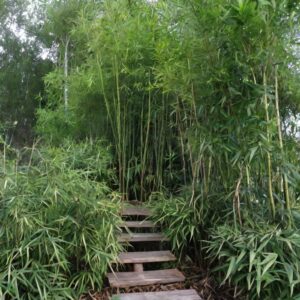
Borinda boliana, a species of bamboo found primarily in the temperate regions of China, is renowned for its distinct physical attributes. As a member of the Poaceae family, this species has garnered attention not only for its ecological importance but also for its unique morphology. This article delves into the intricate physical characteristics of Borinda boliana, providing a comprehensive overview of its size, shape, coloration, leaf structure, and other distinctive features that aid in its identification.
Size and Growth Habit
Borinda boliana is a medium-sized bamboo species, with culms (stems) that typically reach heights of 5 to 8 meters. However, under optimal conditions, it can sometimes grow taller, approaching 10 meters. The diameter of the culms ranges from 2 to 4 centimeters, offering a sturdy yet slender appearance. This growth habit is indicative of its adaptability to various environmental conditions, allowing it to thrive in both dense forests and open landscapes.
The culms of Borinda boliana exhibit a distinctive clumping growth pattern. Unlike running bamboos that spread aggressively through rhizomes, Borinda boliana’s clumping nature makes it a less invasive option for gardens and managed landscapes. This characteristic also influences the density and arrangement of the plant, often forming tight, bushy clusters that can provide excellent windbreaks and privacy screens.
Shape and Structure of Culms
The culms of Borinda boliana are cylindrical and notably taper from base to tip. This gradual tapering enhances the plant’s structural integrity, allowing it to withstand strong winds and heavy rainfall common in its native habitats. The nodes, where leaves and branches emerge on the culm, typically space at regular intervals of 20 to 30 centimeters. These nodes swell slightly and appear more prominent compared to other bamboo species, serving as a useful identification marker.
One of the most intriguing aspects of Borinda boliana’s culms is their surface texture. The culms are covered in a fine, powdery substance known as glaucescence, which gives them a slightly bluish or grayish hue. This feature is particularly noticeable on younger culms and gradually fades as the plant matures. The smooth, almost waxy surface of the culms reduces water loss and protects against fungal infections, further contributing to the plant’s resilience.
Coloration
The coloration of Borinda boliana is a distinctive feature that aids in its identification. Young shoots and culms display a vibrant blue-green color, which transitions to a more subdued green as the culms mature. This color change is a gradual process, often resulting in a striking contrast between the new and old growth within a single clump. The blue-green coloration is attributed to the presence of silica and other compounds within the culm’s epidermal cells.
In addition to the culms, the foliage of Borinda boliana also exhibits unique coloration. The leaves are a rich, deep green on the upper surface, while the underside is a lighter green with a slight bluish tint. This dual coloration not only adds to the plant’s aesthetic appeal but also plays a role in its photosynthetic efficiency. The lighter underside helps reflect sunlight onto the lower parts of the leaf, maximizing light absorption and photosynthesis.
Leaf Structure
The leaf structure of Borinda boliana is another critical aspect of its physical characteristics. The leaves are lanceolate, or spear-shaped, with pointed tips and slightly serrated edges. They typically measure between 8 to 15 centimeters in length and 1 to 2 centimeters in width. The leaf blades are thin yet robust, displaying a prominent midrib that runs longitudinally down the center.
The arrangement of the leaves on the culms and branches is alternate, with each leaf emerging from a small sheath that encases the node. This sheath is often adorned with fine hairs or cilia, which can be a distinguishing feature when identifying the species. The leaves themselves are smooth to the touch, with a slight glossiness that enhances their visual appeal.
One notable characteristic of Borinda boliana’s leaves is their ability to curl or fold during periods of drought or extreme heat. This adaptive feature helps reduce water loss by minimizing the leaf’s surface area exposed to the sun and wind. When water becomes available again, the leaves quickly unfurl, demonstrating the plant’s remarkable resilience to environmental stressors.
Distinctive Features
Distinctive features set Borinda boliana apart from other bamboo species. One such feature is the presence of auricles and ligules at the junction of the leaf blade and sheath. Auricles are small, ear-like projections that flank the base of the leaf blade, while ligules are membranous structures located on the inner side of the sheath. In Borinda boliana, the auricles often have fine bristles, and the ligules are conspicuously fringed, providing key identification markers.
Another distinctive characteristic is the plant’s flowering behavior. Like many bamboos, Borinda boliana flowers gregariously, meaning that large populations flower simultaneously at intervals of several decades. After this rare event, the plants produce seeds, and the parent plants often die. Botanists and ecologists studying bamboo species consider the infrequency and synchronicity of flowering to be a notable event.
Borinda boliana also features a unique rooting system. Fibrous and relatively shallow, the roots spread horizontally rather than vertically. This growth pattern helps the plant capture surface water and nutrients efficiently, which is particularly advantageous in the mountainous regions where it commonly grows. Additionally, the root system helps prevent soil erosion, making Borinda boliana an important species for maintaining ecological stability in its native habitats.
Conclusion
In conclusion, the physical characteristics of Borinda boliana make it a fascinating subject of study for botanists and plant enthusiasts alike. Its medium size, cylindrical and tapering culms, distinctive blue-green coloration, lanceolate leaves, and unique adaptive features all contribute to its identification and ecological significance. Understanding these attributes not only enhances our appreciation of this remarkable bamboo species but also underscores the importance of conserving its natural habitats. As we continue to explore and document the biodiversity of our planet, species like Borinda boliana serve as reminders of the intricate beauty and resilience inherent in nature.

1 thought on “8 Intriguing Physical Traits of Borinda boliana”